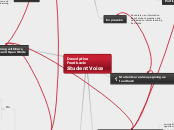Descriptive Feedback: Student Voice
Students are always giving us feedback
Role Play
Body Language
Incomplete work
Gestures
Silence
Sleep
Aggresion
Disorganization
Non-compliance
Developing reciprocal relationships
co-creating learning opportunities
co-designing the learning space
co-constructing assessments
partnering with their students
Listening with Ears,
Eyes and Open Minds
Formal
Surveys
Online posts
Exit cards
Interviews
Informal
Observations
Anecdotes
Peer to Peer Interactions
Product Analysis
CO-CREATES A RESPONSIVE LEARNING ENVIRONMENT
Do
participate in issues
that matter to them
belong in meaningful relationships
shape and contribute
to their learning
environment
Feel
Motivated
Respect
Self efficacy
Belonging
Autonomy
Community
Be
Curious
Active
Engaged
Involving Students Creates Clear Outlets for their Voice
Thinking About the Feedback Loop
Shared Leadership
Students are co-leaders of
learning and accept mutual
responsibility for planning,
assessment of learning
and responsive actions
Participation
Student involvement in
planning, decision making
and implementation is key
Expression
Educators use information
about student progress and
well-being to inform teaching
decisions
Partnership
Students take a lead role in
identifying issues to be
pursued and the educator
supports by naming
the learning
Consultation
Educators look beyond
student work to student
engagement and invite
student discussion and
dialogue about learning
